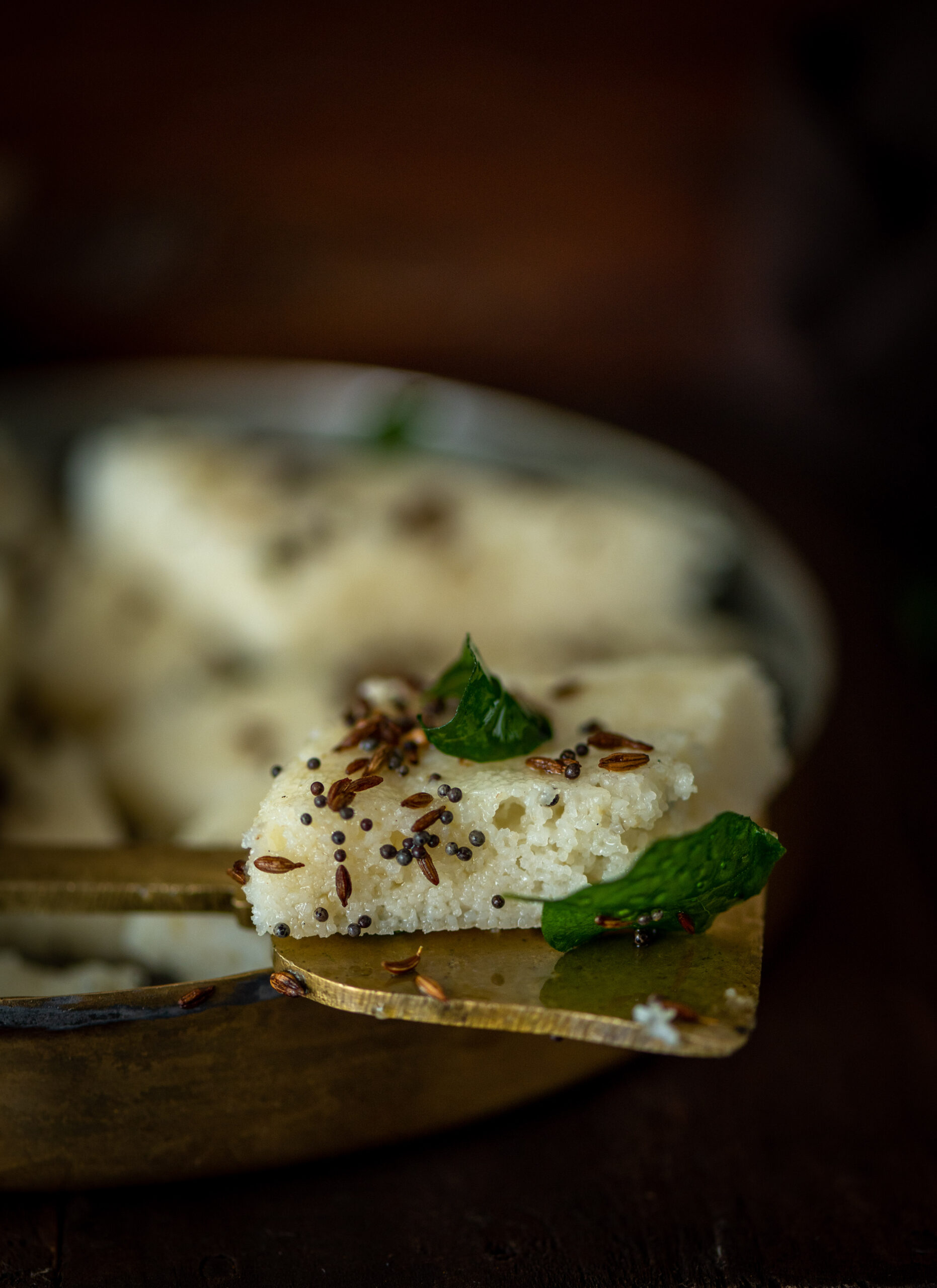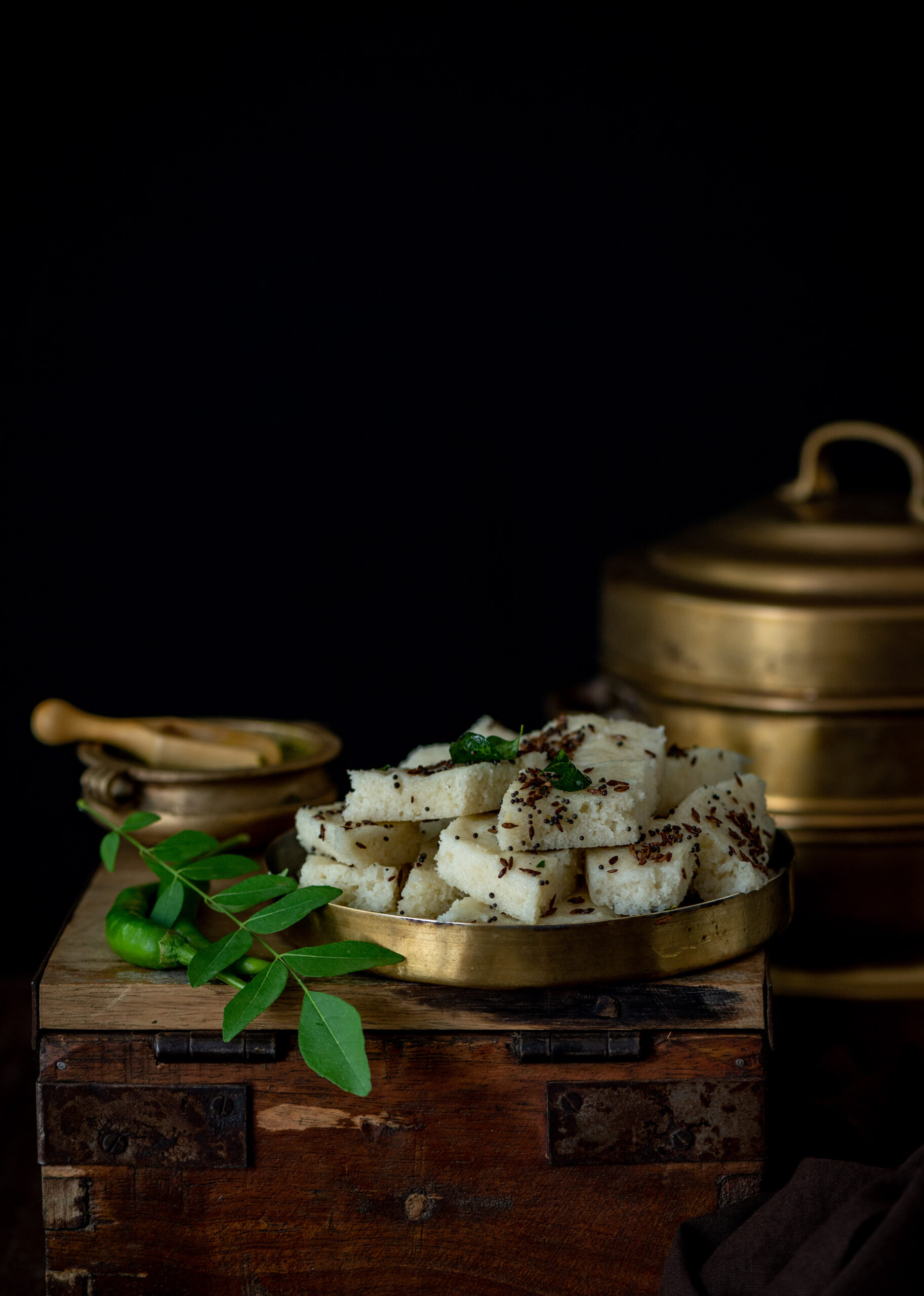When I shared this recipe for a dhokla made of green moong a couple of years ago, I had mentioned that Gujaratis are so famous for this item of food that it’s what we are stereotypically called. “Hey, dhokla!” – there is hardly a Gujarati who hasn’t heard this phrase, just as there is hardly a Gujarati who doesn’t, as stereotyped, love this dish. Dhoklas are a kind of savoury cake, spongy in texture. There are numerous varieties of dhoklas, and the khaman dhokla (yellow in colour, and made with channa dal) is the most popular one, and the one you may be acquainted with from restaurants. But the one that Gujaratis mostly consume at home is the white dhokla, which I am sharing the recipe for today.
There are two kinds of white dhoklas: a version that is more tedious to prepare, which entails washing rice, drying it in the sun and then powdering it. My mother would make these traditional rice flour dhoklas often, but for a quick go-to it was always the rava dhokla. The rava dhokla is the other version of white dhokla, and the recipe that I’ll share today. It tastes quite similar to the rice flour dhokla, and has a quick and easy process. It makes for a light dinner, or as a tasty snack when you have company, and is often had with garlic chutney or a sweet mango pickle.
As you may know from some of my photography, I love antique kitchen objects. They are not only subjects or props to me, but are functional too. I have an old dhokla maker, one that feels like it has always been with me. I cannot remember when it entered my kitchen. Similar to an idly cooker, except flat, it has a set of plates stacked on top of each other. The dhoklas are steamed on these, then cut and served.
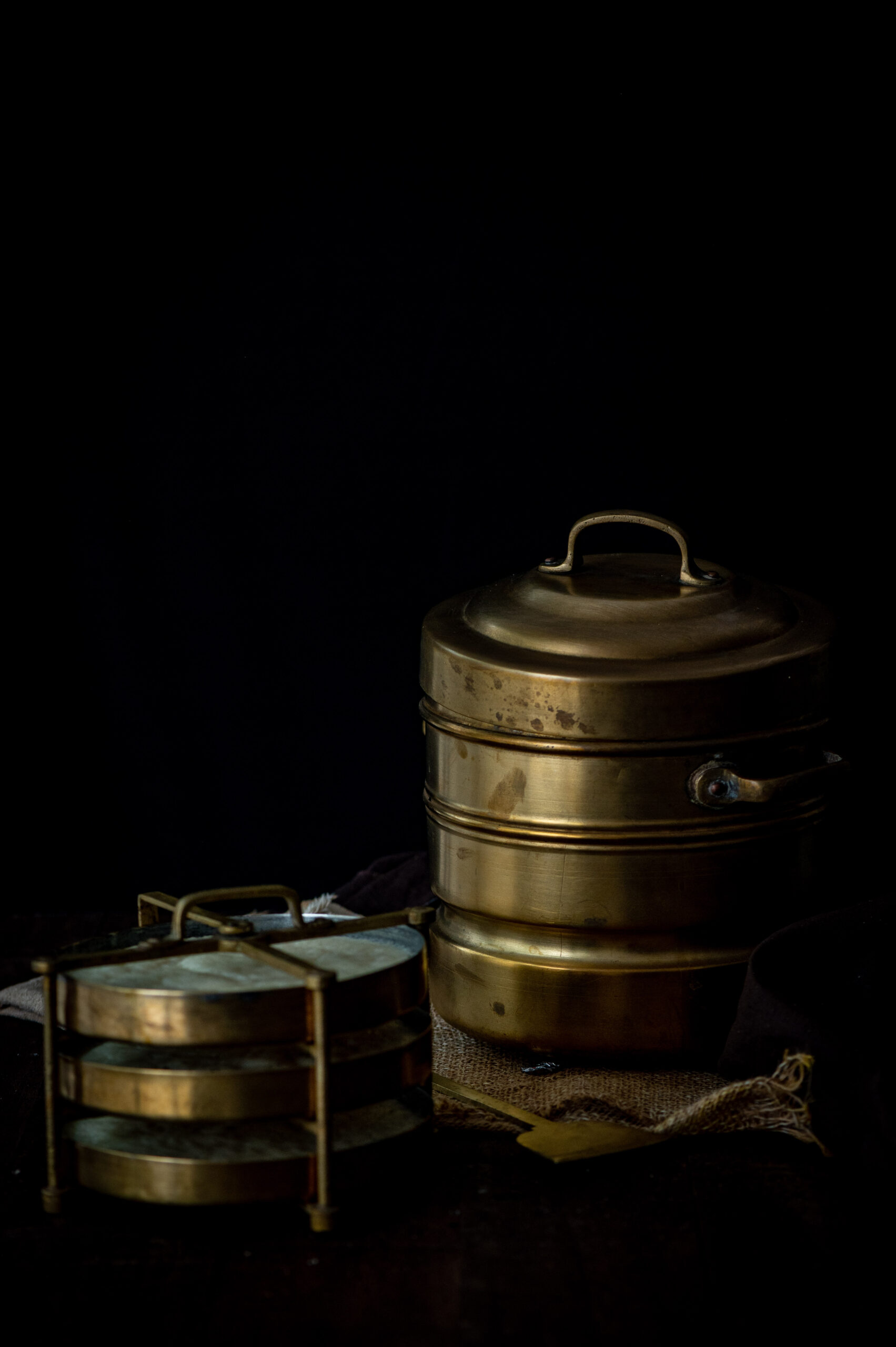
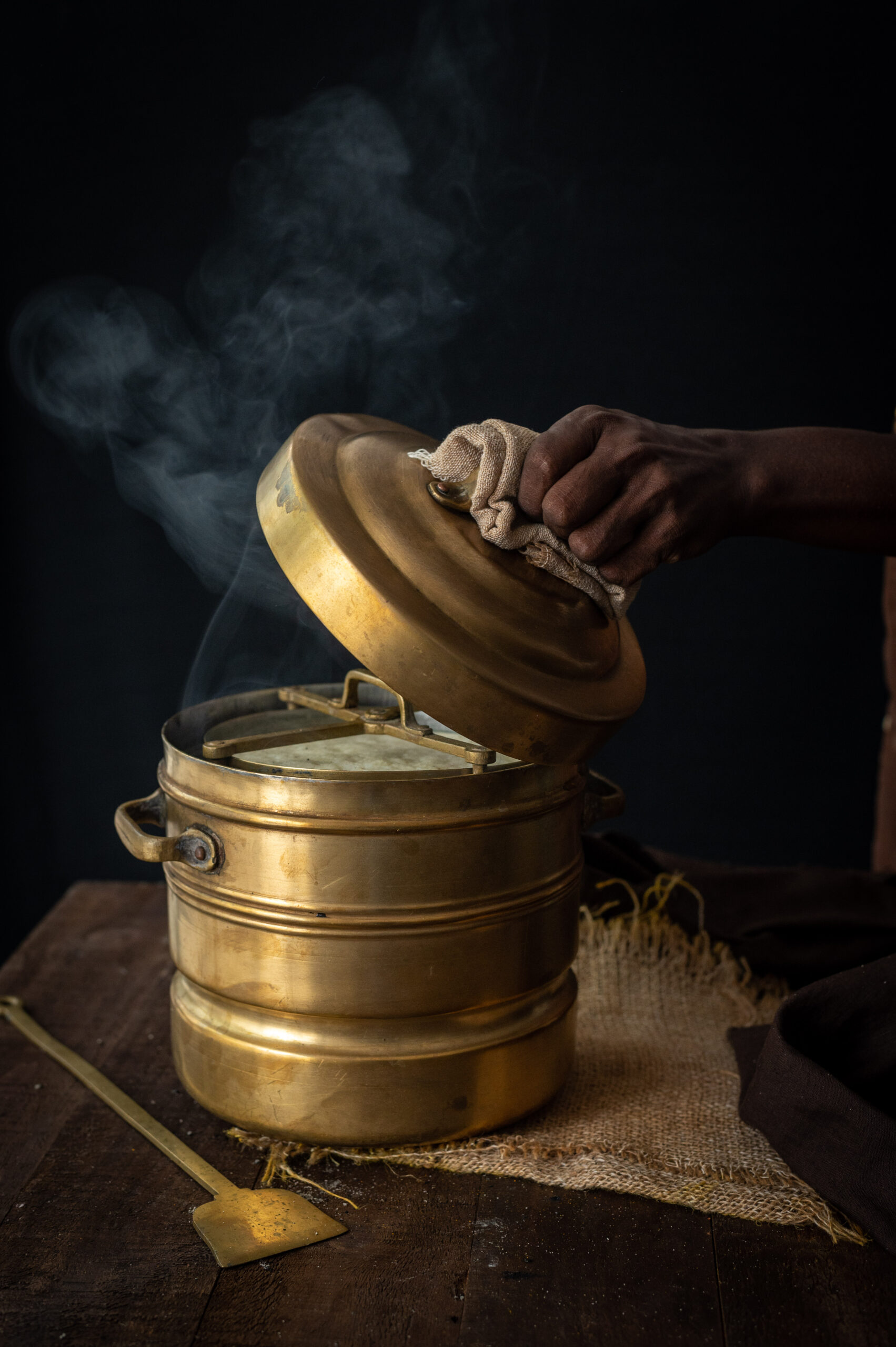
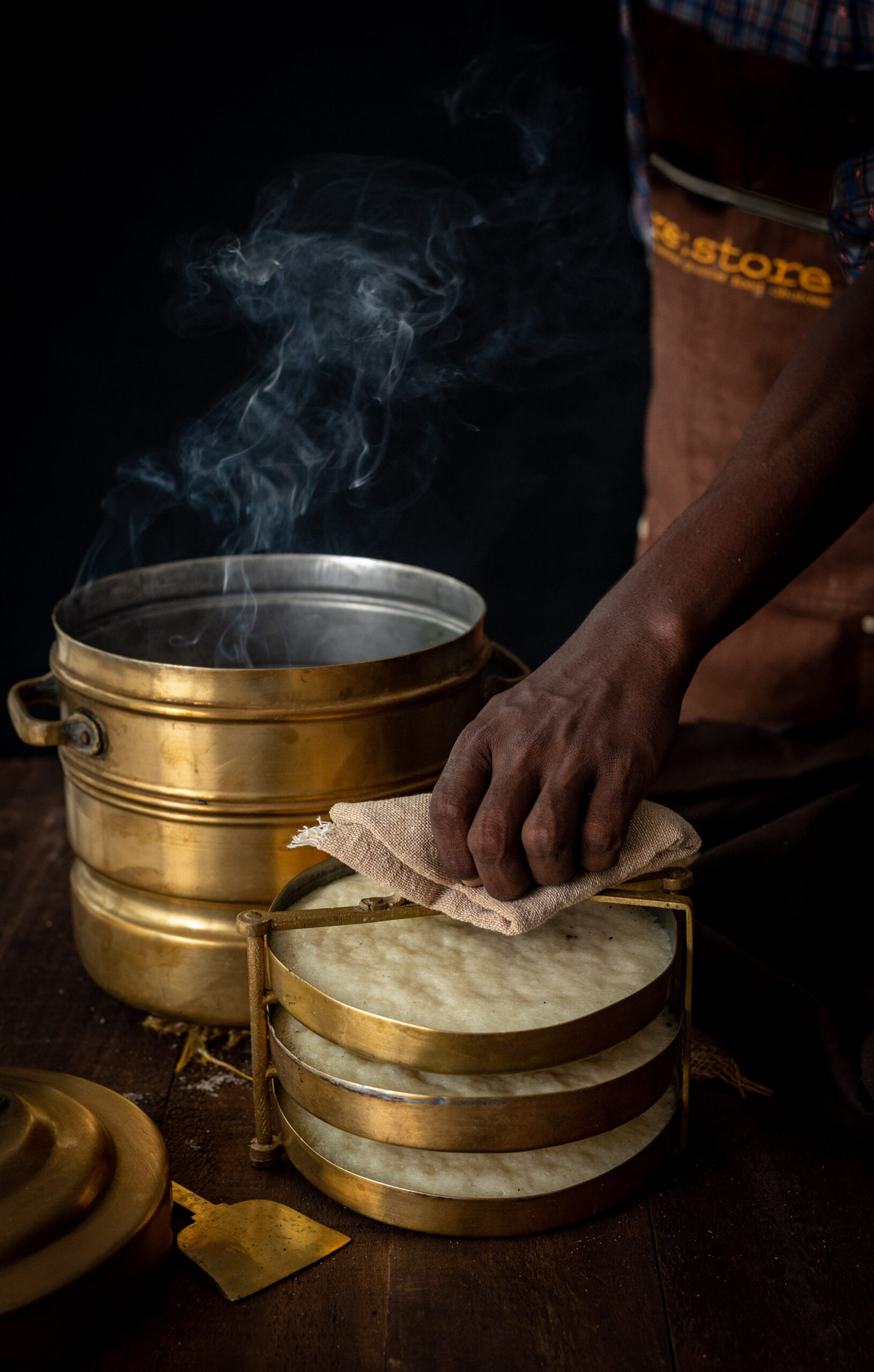
To be honest, I don’t use my dhokla maker very often because I don’t make dhoklas at home frequently, even though we all enjoy this dish very much. I think this is because, for me, the perfect dhokla was always my mother’s. Even when she became really old and would rarely cook, and I would send her all her meals, I would ask her to prepare just dhoklas for me. With great love, she and I had a recurrent jesting conversation in which I would make fun of her – “What’s this, why are you sitting around? Time to start training for a marathon! Or how about getting started on the cooking, and make me some dhoklas?” I would say, and she would laugh, or offer one of her famous smiles – to be followed shortly by a mouthwatering beautiful treat. My sister’s dhoklas are a close second, but as for me, I am still learning – and as always, eager to share what I know.
That reminds me also of how, not so long ago when we were all still zipping up and down the country and around the world with ease, I would pack dhoklas for short flights of under three or four hours. They travel well as they don’t need accompaniments, and the best part is that they don’t have a strong smell. The whole plane doesn’t find out that you’re eating dhoklas when you open your lunchbox. So I’d fly off to Mumbai, eating my own dhoklas in the air, and when I arrived, my sister would be ready to serve me a fresh batch of her own. I guess it’s true what they say: no matter where we are, Gujaratis can’t get enough of a good dhokla.
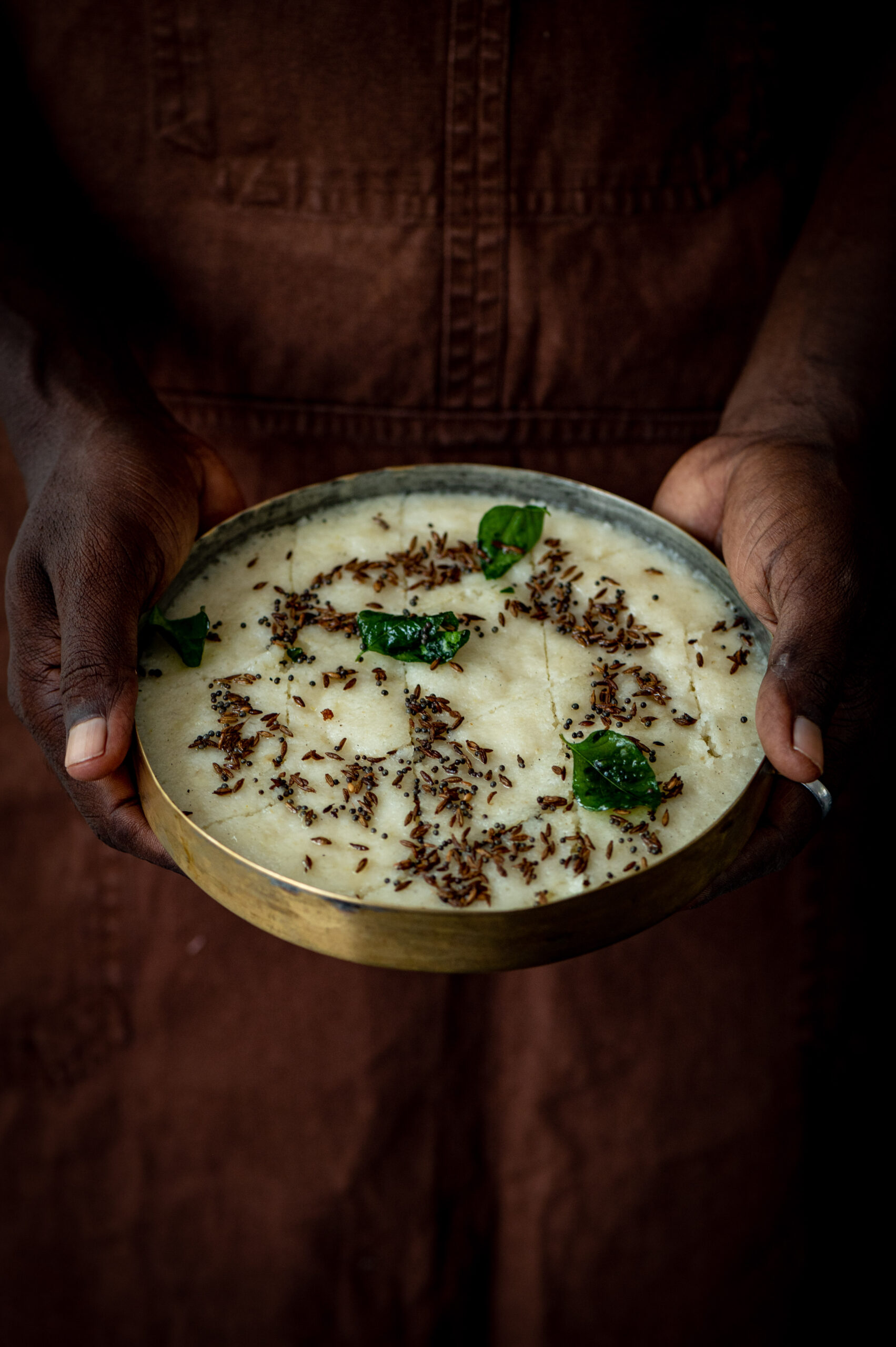
White Dhokla
(Yield: Serves 2)
1 cup rava
½ cup yoghurt
1 cup + ½ cup water
Salt to taste
1 tablespoon oil
½ teaspoon ENO fruit salt
½ teaspoon green chili-ginger paste
Tempering:
2-3 tablespoons oil
¼ teaspoon mustard seeds
¼ teaspoon cumin seeds
A few curry leaves
In a bowl, add rava, yoghurt, 1 cup of water, salt, green chili-ginger paste and oil. Mix well. You will get a thick batter. Set this aside for at least half an hour.
Now, the batter would have thickened further. It needs to be of the consistency of idly batter, so add the remaining half cup of water if required.
Add the ENO fruit salt and gently mix the batter. At this point, it will be frothing.
Prepare the dhokla cooker / plates by greasing them. Then, pour the batter into the plates and steam for about 20-25 minutes with the lid on.
Remove the plates from the cooker once the batter has cooked. Allow to cool.
Finally, temper the dhokla. For this, heat the oil and add the mustard seeds and cumin seeds. Allow them to splutter, then add the curry leaves. Immediately, pour this hot mixture over the dhokla.
Cut and serve plain or with accompaniments of your choice. Once again, I would recommend trying out one or all of the three dips in my recent Indian condiments series. The raw mango thovayal, the lasun ki chutney or the ginger chutney will beautifully elevate the soft, spongy dhokla. I hope you’ll enjoy this delicious white dhokla – and that it will make you clearly understand why we Gujaratis love it so much! If you do, don’t forget to try out the green moong dhokla variant too. Let me know which one you prefer!
